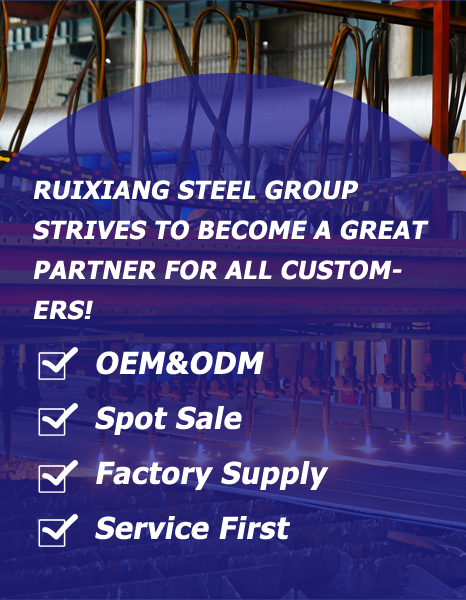Safety Precautions and Best Practices for Cutting Galvanized Steel
 Click:165Edit: Admin
Click:165Edit: Admin Time:2025-10-04 18:06:43
Time:2025-10-04 18:06:43
Safety Precautions and Best Practices for Cutting Galvanized Steel
Cutting galvanized steel requires strict adherence to safety protocols to protect workers from toxic fumes, fire hazards, and mechanical injuries. As a trusted supplier in the steel industry, Ruixiang Steel Group emphasizes the importance of combining the right equipment, environmental controls, and operational knowledge to ensure safe and efficient cutting processes.
Understanding the Hazards
Galvanized steel is coated with zinc, which vaporizes during cutting and produces toxic zinc oxide fumes. Inhalation can lead to "metal fume fever," with symptoms like chills, nausea, and respiratory distress . Additional risks include:
Fire or explosion from sparks igniting flammable materials .
Mechanical injuries from tool mishandling or material instability .
Harmful dust and debris affecting eyes and skin .
Personal Protective Equipment (PPE)
Proper PPE is non-negotiable. Ensure workers wear:
Respirators or masks rated for zinc oxide fumes .
Protective goggles to shield eyes from flying particles .
Fire-resistant gloves and clothing to prevent burns .
Safety boots for foot protection against heavy materials.
Pre-Cutting Preparations
Environment Setup
Ventilation: Work in well-ventilated areas or use local exhaust systems to disperse fumes .
Workspace organization: Keep the area clean and free of clutter to avoid tripping . Remove flammable items like oil or gas cylinders .
Equipment inspection: Check cutting tools, gas lines, and electrical systems for damage before starting .
Material Handling
Secure the steel firmly with clamps or vices to prevent shifting during cutting .
Remove surface contaminants like oil or dust to reduce toxic emissions .
Safe Cutting Techniques
Operational Best Practices
Train operators thoroughly on tool-specific protocols and emergency procedures .
Maintain tools properly: Use sharp blades and undamaged nozzles to minimize sparks .
Control cutting speed: Adjust speeds to avoid excessive heat, which increases fume production .
Keep fire extinguishers nearby for immediate response to ignition .
Emergency Readiness
Establish clear emergency plans for fires, injuries, or gas leaks .
Post-cut inspections: Check for smoldering debris or hidden fires .
Ruixiang Steel Group’s Professional Advice
At Ruixiang Steel Group, we recommend:
Using automated cutting systems (e.g., CNC machines) to reduce direct human exposure .
Regular health monitoring for workers handling galvanized steel frequently.
Collaborating with safety experts to update protocols based on the latest industry standards.
Conclusion
Cutting galvanized steel safely hinges on proactive hazard control, rigorous training, and correct equipment use. By prioritizing ventilation, PPE, and disciplined workflows, businesses can protect their teams and enhance productivity. For more guidance on steel processing, contact Ruixiang Steel Group—your partner in quality and safety.
 Click:165Edit: Admin
Click:165Edit: Admin Time:2025-10-04 18:06:43
Time:2025-10-04 18:06:43

